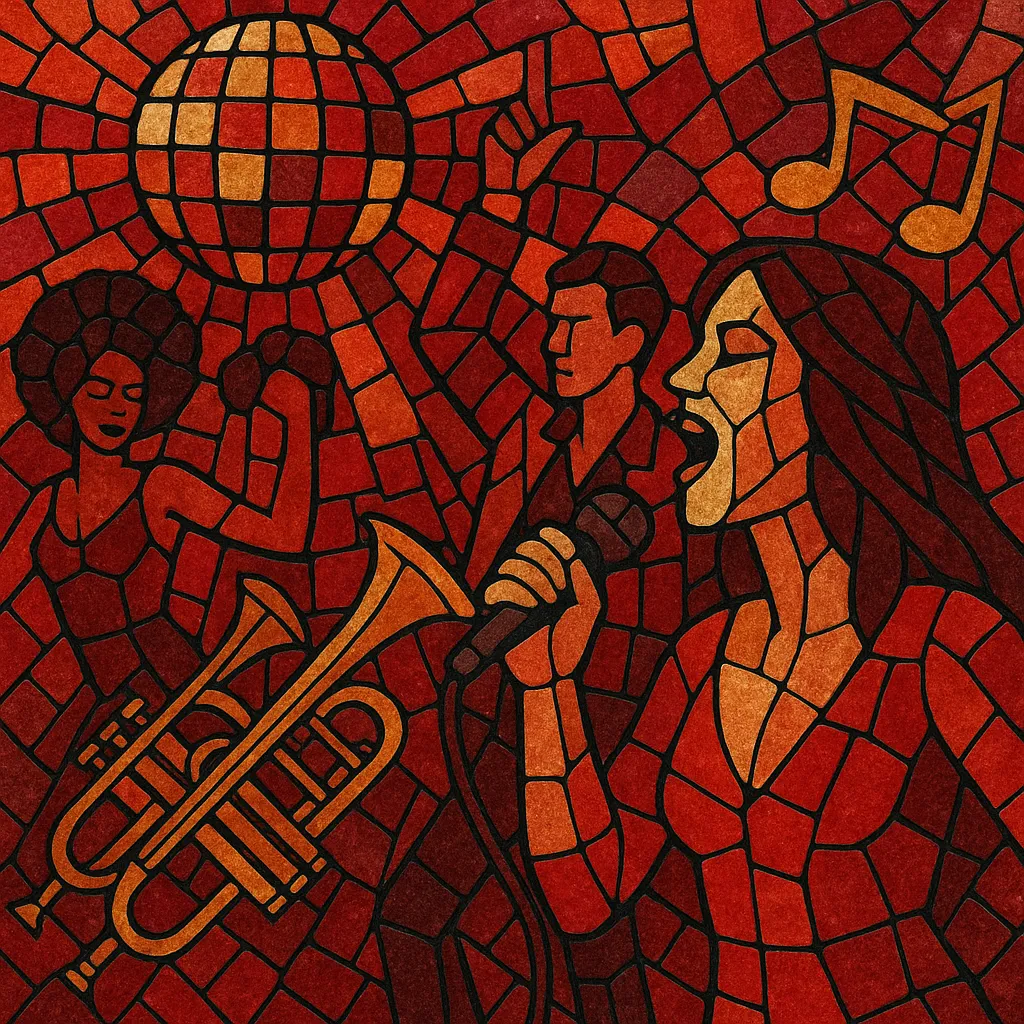Red disco is a disco and Euro-disco–rooted pop style that emerged behind the Iron Curtain, where state-approved (or cautiously tolerated) dance music absorbed Western four‑on‑the‑floor grooves and synth textures while maintaining the melodic, lyrical, and vocal hallmarks of socialist-era popular music (estrada) and regional pop traditions.
Characterized by buoyant basslines, string machines, bright brass, choir-like refrains, and optimistic, often idealized themes, red disco reimagined late‑’70s and early‑’80s dance music for Soviet and Eastern Bloc audiences. The result is a distinctive blend: Western disco structures with Slavic/Mediterranean folk-inflected melodies, theatrical delivery, and polished, state-studio production aesthetics.
Disco’s global boom reached the socialist world through radio, films, touring orchestras, and imported records. Within the Soviet Union and Eastern Bloc, danceable pop had to operate within cultural policy, so band formats like VIA (vocal‑instrumental ensembles) adapted disco rhythms to the existing estrada tradition. Arrangers folded four‑on‑the‑floor beats, syncopated bass, and string/brass stabs into familiar melodic and vocal styles, creating a distinctly local flavor.
As synthesizers and drum machines became more accessible in state studios, red disco grew sleeker and more electronic, paralleling Euro‑disco and synth‑pop. Lyrics typically emphasized optimism, romance, and everyday heroism, with occasional patriotic undertones. Regional scenes (USSR, Czechoslovakia, Poland, Hungary, Bulgaria, Romania, Yugoslavia, and the GDR) developed their own signatures—some more orchestral and chanson‑like, others closer to Italo/electro‑disco.
After the fall of the Eastern Bloc, tastes shifted toward rock, eurodance, and Western pop, and red disco receded from mainstream airwaves. In the 2010s–2020s, crate‑diggers, reissue labels, and online communities revived interest. Its textures and imagery helped inspire retrofuturist micro‑genres such as sovietwave and informed vaporwave/hauntological sampling culture, reframing red disco as both nostalgic artifact and fertile sample source.


